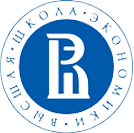The authors of the guidance note stress that these agencies often fail to meet expectations, in particular, due to the lack of a systemic approach to produce and analyse data to monitor and evaluate their success.
The researchers list the following obstacles to the performance of anti-corruption bodies and the achievement of their goals:
1) Difficulties in monitoring and evaluating the real effectiveness of the measures for preventing, detecting and countering corruption due to:
- the lack of quantitative indicators to conduct analysis and, in particular, establish cause-and-effect relationships between the performance of anti-corruption agencies and the decrease of the level of corruption;
- the dependence of performance indicators on perceptions of state representatives, businesspeople and population based on the findings of different studies such as Corruption Perceptions Index (CPI), Worldwide Governance Indicators (WGI) and others, and media coverage, especially of high-profile corruption cases;
2) The lack of a set of indicators to monitor and evaluate the performance of anti-corruption agencies and based on internal preconditions.
In order to address these challenges in the short term, the authors of the guidance note provide anti-corruption agencies with the following recommendations:
- identify high-risk areas or topics of particular interest to the state and the public (health, education etc.) and focus on countering corruption in these areas;
- focus on petty corruption that allows for a structured approach and easier achievable progress, and its impact on people’s perceptions of corruption;
- adopt corruption prevention measures;
- set realistic goals.
In the long term, the researchers suggest that the anti-corruption agencies apply a framework for assessment grounded in the production and exhibition of data-based evidence that allows for linking their activities with the achievement of strategic goals in countering corruption. This approach consists of four steps:
Step one. Defining the objectives - “What are we trying to achieve?”
The first step should consist in setting objectives for anti-corruption agencies. The authors of the guidance note highlight that these should, as a minimum, correlate with the goals formulated at higher levels, in particular, in national anti-corruption strategies and be horizontally related to the reform in other areas such as civil service regulation.
Additionally, for the goals to be used as criteria for assessing the effectiveness of performance of anti-corruption agencies, they should:
- be clear, explicit and attainable, but ambitious as well;
- take into account legal, cultural, political and other characteristics of the country, as well as the regulatory peculiarities in the areas identified as vulnerable to corruption or of particular interest to the public;
- take into account capacities of the anti-corruption agency and the anti-corruption system as a whole;
- include not only abstract notions such as “decreasing the level of corruption” or “enhancing transparency”, but also specific deliverables such as better quality of services provided at the state and municipal levels.
Step two. Design a path to achieve objectives - “How are we going to achieve it?”
Subsequently, it is suggested that anti-corruption agencies define the list of relevant and feasible measures for achieving the objectives. To this end, it is suggested to turn to a theory of change (ToC)** which is the basis for establishing the causal relationship between the activities of anti-corruption agencies and achieved results by providing chronological sequence of what is supposed to happen (results chain), adding internal and external assumptions (preconditions) that affect the achievement of results. For example:
- If the anti-corruption agency allocates financial and human resources to undertake procurement fraud workshops assuming that the training will improve the capacity of officials responsible for countering fraud in procurement, then the output will consist in having better trained public procurement officials;
- If the assumptions that qualified officials are able and willing to detect more fraud cases hold true, increased capacity of these officials will improve quality of public tenders;
- If the assumptions that undetected fraud was indeed a problem before and is not replaced by other forms of corruption like collusion hold true, improved quality of public tenders will contribute to lower levels of corruption in public procurement.
Step three. Ensure that activities produce results and evidence - “Are our programs and projects implemented as planned and do they yield the intended results?”
The authors of the guidance note recommend that the launching of anti-corruption projects is preceded by defining the key performance indicators containing quantitative and qualitative data, as well as a variety of approaches for measuring levels of corruption, including perceptions, experience, proxies etc.
It is noted that to this end both raw data of international organisations that serve as a basis for indices and other assessments and information gathered by anti-corruption agencies themselves can be employed.
These indicators should:
- be measurable and describe what is to be measured;
- be specific and relevant;
- allow assessment of progress against objectives and detect cause-and-effect relationships;
- not include targets or set direction for progress.
In the example provided above, the performance indicators can be: the amount of funding and person/days necessary to organise training, number of such events and their participants etc.
The authors of the guidance note believe that the effectiveness of performance of anti-corruption agencies should be assessed by dedicated units responsible for defining the key performance indicators and subsequent monitoring and evaluation of performance of anti-corruption agencies based on these indicators.
Step four. Make achievements visible and attributed to the work of anti-corruption agencies - “Are relevant stakeholders aware of improvements and do they consider them a result of our activities?”
After certain progress is achieved in the implementation of anti-corruption projects, it is recommended that anti-corruption agencies raise awareness of a wider audience about the outcome by:
- publishing frequent, transparent, and understandable data-based evidence on performance of anti-corruption agencies through different channels of communication, in particular, social media;
- reporting to higher state bodies to make sure that the allocated budget funds were spent wisely and as planned with the objectives being achieved as efficiently as possible;
- engaging with stakeholders, including non-governmental organisations that can also participate in assessing performance of anti-corruption agencies;
- adopting a dedicated document covering the issues of interaction of agencies with stakeholders and openness of their operation, for instance, in the form of a communications strategy, and appointing a dedicated unit or officer in charge of this work.
*The guidance note is drafted under the UNDP Project on Promoting a Fair Business Environment in ASEAN funded by the Government of the United Kingdom and the ASEAN Economic Reform Programme and summarizes the experience gained during a prior project supporting the National Anti-Corruption Commission of Thailand (คณะ กรรมการ ป้องกัน และ ปราบปราม การ ทุจริต แห่ง ชาติ).
**Theory of change is an approach to drafting and assessing documents of strategic planning, public policy measures or specific projects and programmes aimed at getting and visualizing most comprehensive and consistent list of actions necessary to achieve a final result (effect).

